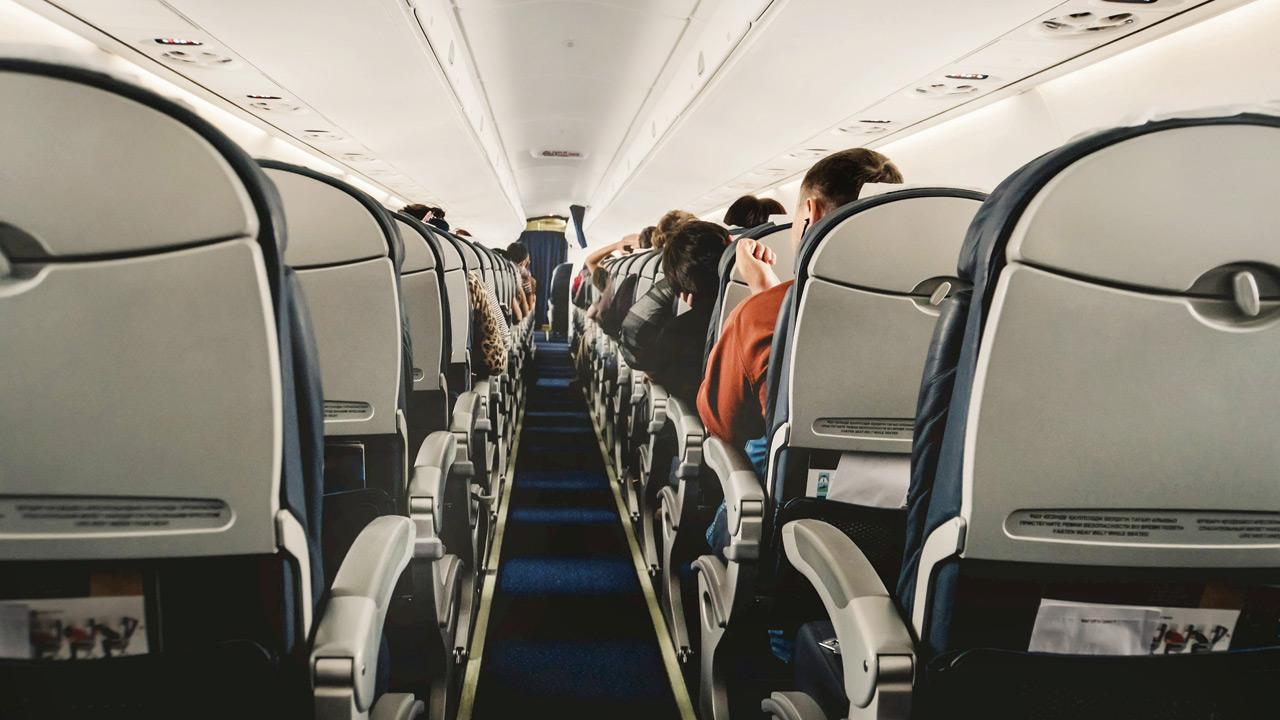Strategic route planning is key factor in managing demand-supply imbalance, sources reveal

Indian airlines cater to the needs of approximately four lakh domestic flyers every day. Representation pic/iSTOCK
India’s burgeoning aviation industry is navigating an era of high demand with a fleet of only 803 registered passenger aircraft, excluding wet-leased aircraft, according to updated data from the Directorate General of Civil Aviation (DGCA). The data reflects significant changes, including the merger of Air India and Vistara, and the exclusion of Go First’s grounded fleet due to court-ordered liquidation. Despite these constraints, the Indian aviation sector meets the travel needs of lakhs of passengers. The industry recently saw the highest number of passengers transported in a day—5,00,000—on November 17, a milestone in itself.
ADVERTISEMENT
Maximising aircraft
“Aircraft turnaround time is crucial in maintaining schedules and optimising resources. With reduced ground time between flights, airlines operate more sectors daily, effectively increasing capacity,” said a senior DGCA official, requesting anonymity.
Strategic planning
Experts also point to strategic route planning as a key factor in managing the demand-supply imbalance. Airlines prioritise high-demand routes, ensuring that available aircraft are deployed to sectors with maximum load factors.
“Airlines meticulously analyse passenger demand trends to determine sector allocation. Long-haul international flights and high-density domestic routes are often allocated larger aircraft to fulfil the passenger demand depending on the runway and airport specifications of arrival and departure. Bigger airports can easily operate B777s or even A380s but smaller airports with small runway lengths often are allocated A320s, A320neos and A321s among other aircraft. Meanwhile, some Indian airlines still use twin-turbo propeller aircraft like ATR-72s for smaller passenger demand sectors,” said a MoCA analyst.
“India’s passenger numbers, estimated at over four lakh per day, often outpace available seat capacity, leading to higher airfares during peak seasons,” said a senior MoCA official. “India’s airlines need to expedite fleet expansion to sustain growth and meet future demand. Multiple Indian airlines have ordered multiple aircraft scheduled to arrive in batches in the next few years which will definitely increase the fleet size reducing load on the overcrowded sectors,” the official said.
Aircraft owned by carriers
IndiGo and Tata Group alone own 87.62 per cent of the 803 aircraft in the Indian fleet. The former has 383 aircraft or 47.69 per cent while the latter has 305 or 37.98 per cent.
Narrow-body situation
About 85 per cent of all passenger aircraft in India are narrow body, only 8.34 per cent are wide body while 12 per cent are turboprops and one per cent are regional jets. The main difference between narrow-body and wide-body aircraft is the width of the fuselage, which affects the aircraft’s seating capacity, range and cargo capacity. Narrow-body aircraft have a single aisle and can seat up to 250 to 275 passengers, while wide-body aircraft have two aisles and can seat 200 to 600 passengers.
Expert Speak
Captain Mohan Ranganathan, a seasoned aviator and an aviation expert, said, “An aircraft will be operating approximately 14 to 15 hours a day. For ease of calculation, if we take an average of 250 passengers per aircraft per flight, if the aircraft is doing even six flights a day, that itself will be 1,500 passengers per day per aircraft. If we multiply this number with the number of registered aircraft in the Indian fleet and also consider the passengers carried by wet-leased aircraft by Indian airlines, the number would eventually boil down to the number of passengers we see today.”
“Another factor to be considered is the availability of infrastructure when ordering new aircraft. The problem is that you can have more aircraft but for every additional aircraft that is coming, do you have the pilots, engineers and crew and do you have the air traffic controllers to handle the increased numbers? It is not just the numbers but we even have to see if the infrastructure is ready. Mumbai airport is at its peak for number of movements currently.”
More aircraft on the way
Since 2018, Indian airlines have ordered 1,742 aircraft from Airbus and Boeing, of which 78 have been received with the rest likely to start arriving from mid-2025.
IndiGo: The airline has ordered the most aircraft, 1,000, in April 2024. They are expected to arrive from Airbus between mid-2027 and 2032.
Air India: The airline placed an order for 470 aircraft in June 2023, and they are expected to arrive in bulk from mid-2025 onwards. The order includes 290 Boeing and 250 Airbus aircraft.
Akasa Air: The airline has placed orders for 226 aircraft. Between 2021 and 2023, the airline placed orders for 76 Boeing 737 MAX planes, of which 22 were received. The rest are expected to arrive between 2027 and 2032.
Apart from the 76 aircraft, the airline also placed an order for 150 more 737 MAX aircraft, which are expected to arrive between 2027 and 2032.
Vistara: In 2018, Vistara placed an order for 56 aircraft from Airbus and Boeing—including A320neo, A321 and 787-9 models—which were delivered by March 2024. The fleet has now been merged with that of Air India.
SpiceJet: The airline’s CEO Ajay Singh recently announced plans to buy 75 more aircraft, taking the fleet past the 100 mark. Orders, however, are yet to be placed.
Flight numbers of another kind
Year: Number of registered aircraft
2022: 610 (till March 1, 2022)
2024: 803 (till late November 2024)
Pax flown (domestic traffic)
Oct 2022
114.07 lakh or 3.6 lakh per day
Oct 2024
136.58 lakh or 4 lakh per day
 Subscribe today by clicking the link and stay updated with the latest news!" Click here!
Subscribe today by clicking the link and stay updated with the latest news!" Click here!







